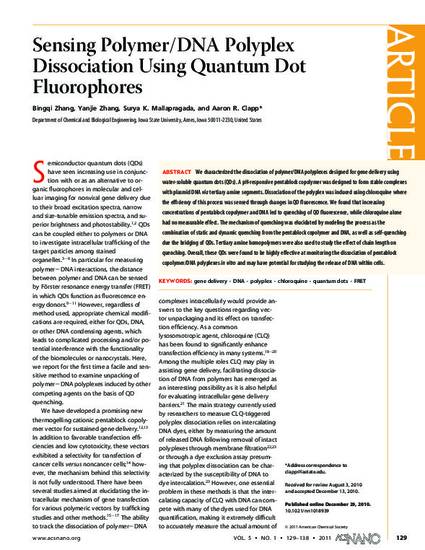
We characterized the dissociation of polymer/DNA polyplexes designed for gene delivery using water-soluble quantum dots (QDs). A pH-responsive pentablock copolymer was designed to form stable complexes with plasmid DNA via tertiary amine segments. Dissociation of the polyplex was induced using chloroquine where the efficiency of this process was sensed through changes in QD fluorescence. We found that increasing concentrations of pentablock copolymer and DNA led to quenching of QD fluorescence, while chloroquine alone had no measurable effect. The mechanism of quenching was elucidated by modeling the process as the combination of static and dynamic quenching from the pentablock copolymer and DNA, as well as self-quenching due the bridging of QDs. Tertiary amine homopolymers were also used to study the effect of chain length on quenching. Overall, these QDs were found to be highly effective at monitoring the dissociation of pentablock copolymer/DNA polyplexes in vitro and may have potential for studying the release of DNA within cells.
Available at: http://works.bepress.com/mallapragada_surya_k/12/

Reprinted (adapted) with permission from ACS Nano 5 (1), pp.129-138, doi: 10.1021/nn1018939. Copyright 2011 American Chemical Society.